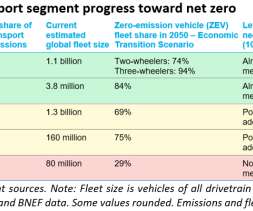EIA projects nearly 50% increase in world energy usage by 2050, led by growth in Asia
Green Car Congress
SEPTEMBER 25, 2019
EIA projects most of this growth will come from regions where the consumption of energy is driven by strong economic growth, particularly in non-OECD Asia. This long-term trend of Asian energy consumption to support growing economies strongly influences the extraction, refining, and transport of oil, natural gas, and other fuels.






















Let's personalize your content